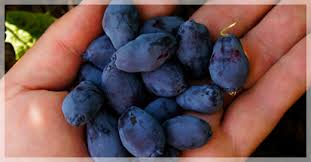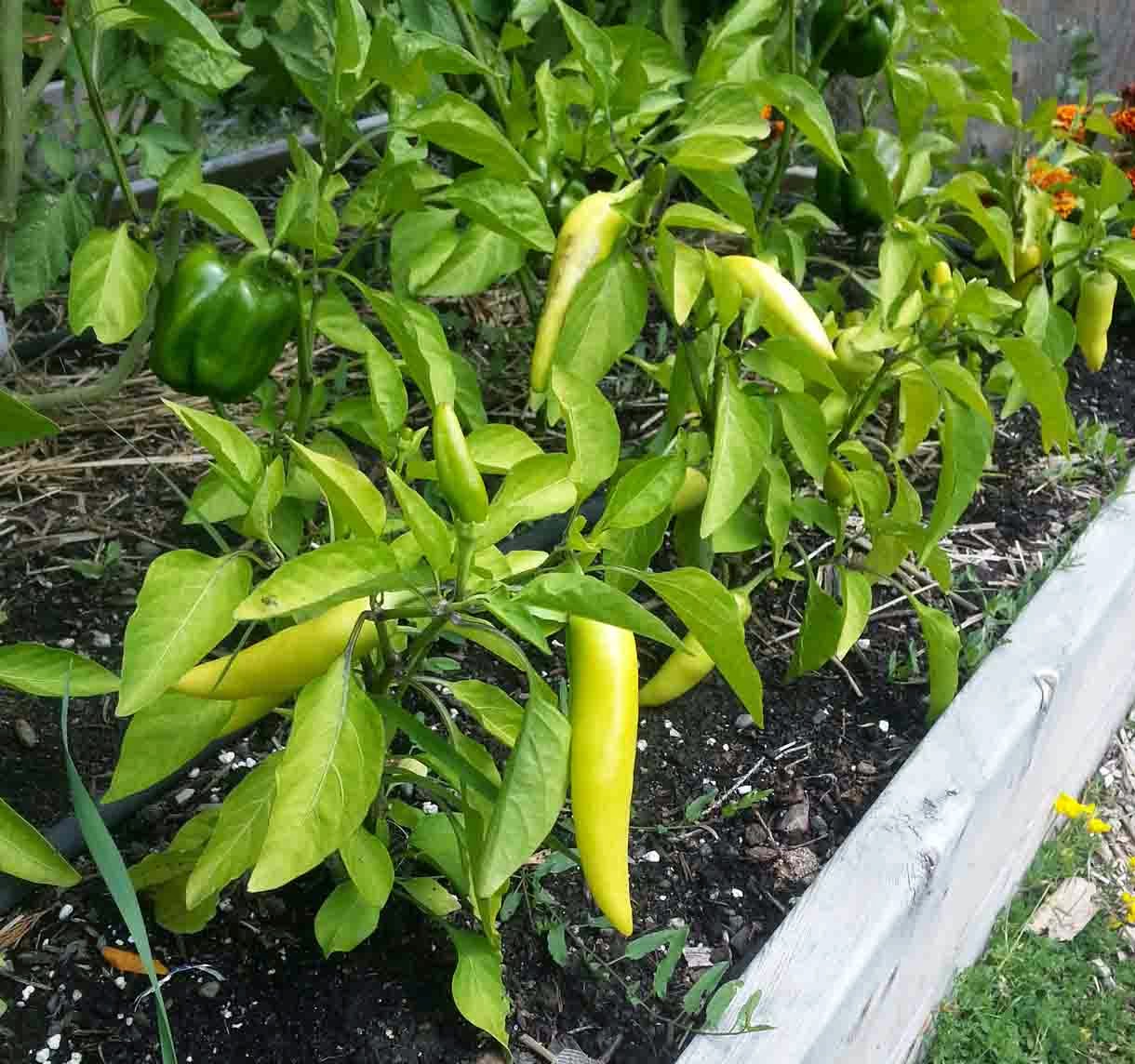Fruit Trees & Berry Bushes Ordered
I am SO excited...I finally ordered my fruit trees & berry bushes last week! I’ve been meaning to do this since we moved here, so it’s been a long time coming.
I was planning on ordering two apple trees, but then couldn’t resist and ended up ordering 3. It took a long time to settle on the varieties that I would be growing - a couple of months of umming and ahhing to be exact. There are just so many factors to take into account including taste (of course!), hardiness, pollination & storage potential. In the end I settled on Honeycrisp, Granny Smith & Haralson, all of which will be on semi-dwarfing root stock.
I purchased the trees from Mori Essex in the Niagara region. In addition, I also purchased a nectarine tree from them - AC Harovin Rouge - a disease resistant, hardy, freestone variety. My first choice was actually a variety called Fantasia, which this nursery also sells. However, I'm already pushing the hardiness limit with the Granny Smith - it's a zone 6* apple and I'm in zone 5. However, I'm only a few km away from what is technically zone 6 and many orchards in my area grow Granny Smith apples successfully, so I figured I would give it a try. As I've mentioned before, hardiness zones don't follow a street map! For now, however, having one borderline hardy tree to worry about is more than enough.
Also included with my apple & nectarine tree order was a blackberry (Black Satin - a thornless variety) and red raspberry canes (Heritage - an everbearing variety that produces a summer & fall crop).
Mori Essex is less than a 45 minute drive, so instead of having the trees & canes delivered for a $45 charge, I decided to pick them up instead. You have to choose the pick-up date when you order, so I picked Friday April 17th. I’m keeping my fingers crossed that the weather will cooperate so that I can get my baby trees & canes into the ground that weekend.
Mori Essex didn't have everything I was looking for, so I had to look elsewhere for the remaining items on my list. I decided to try Lindberg Seeds, a nursery in Manitoba. I’ve never ordered from them before, but they happened to have what I needed and their prices were very reasonable. Many of the local nurseries only sell potted plants in larger sizes that significantly increase the price. For example, blueberry shrubs run about $20+ per pot at a nursery. At Lindberg, they sell bareroot blueberries for $14.49 for two.
My order from Lindberg included the following:
- Blueberries - 1 each of Blue Crop & Blue Ray
- Yellow Raspberries - 5 canes
- Haskap - 3 varieties - Borealis, Tundra and Berry Blue
I know what you're asking right about now - what on earth is a Haskap? Well, I had never heard of them either until I started to do a bit of research on edible berry possibilities for the garden.
A Haskap (also known as a honeyberry) is a honeysuckle (Lonicera Caerulea) that produces small, elongated blue berries. Nutritionally, they really stand out - ounce for ounce, their vitamin C content (50-70mg/100 grams) is comparable to that of oranges and they have more antioxidants than blueberries - that's a pretty powerful nutritional punch!
 |
| Photo Source: Haskap Canada |
Haskaps are said to have a unique taste that is often compared to a combination of blueberry & raspberry although I've read other reviews that say they are more of a raspberry/grape. I have never actually tasted one myself so I hope I'm not disappointed.
 |
| Photo Source: Prairie Plant Systems Inc. |
I don't think I'll be growing these varieties this year as all of the spots in my beds are already spoken for, but both tomato & pepper seeds are good for several years, up to 4 or 5, so I'll be saving them for next years garden.
Going back to my tree & berry purchases - you would think that choosing the varieties would be the hardest part. For me, however, harder still is the next step in the process...deciding where to put these trees & bushes.
I have several options, but just can't seem to settle on the "best" option. I must have changed my mind at least a dozen times already - it's such a big decision, especially when it comes to the trees, and I'm a bit paranoid about making a mistake. I also have to remember that my overall plan is to have at least 2 more apple trees, so I have to take that into account when I position these - apple trees should be planted relatively close together to achieve proper pollination.
I think it will help if I map things out physically - putting a stake at each tree location, standing back, assessing, moving things around - you know what I mean. This will definitely be one of the first things I do once the ground dries out.
Till next time...
*Canadian and USDA hardiness zones are classified differently resulting in our zones usually being shown as 1 zone higher. For example, hardiness zone 6 in Canada would be considered a zone 5 in the US.


I've been wanting to try those Haskaps--and I'm glad to know you are--we'll get a thorough update on them.
ReplyDeleteI can plan stuff out on paper till I'm blue in the face--nothing beats actually physically marking stuff outside. I have tubs of all sizes and I use those to show plant spacing. It really helps with positioning things.
Happy Spring
That's a great tip about using tubs, Sue! It's often so hard to imagine the interplay between plants when you are looking at an empty space.
DeleteI'm really looking forward to trying the Haskaps - I have yet to taste a berry that I don't like, so I'm optimistic that I'll enjoy them. Since they are not that common I have no idea when that will be - I've seen mention of anywhere from 1 to 4 years for that first harvest.
For berries this year I'm planting a saskatoon (though here in the US we usually call them service berries or june berries).
ReplyDeleteYet another berry that I've never tasted - I'll be interested to see how you like it, as a shrub & on the plate.
DeleteI have a Saskatoon bush on my allotment. It took a few years to get going but produced lots of yummy fruit last summer. It's good as well because it doesn't need acid soil like blueberries. The Haskap looks very interesting too!
DeleteI'm actually hoping that the raspberries give me a harvest by next year - I need to get some immediate satisfaction (relatively speaking) from at least some of my plantings, considering I won't likely be harvesting any apples or nectarines for a few years yet.
DeleteHow exciting, planting up your own little fruit orchard. Granny Smith is one of my favourite apples, I like the quite tart flavour of it. The haskaps sound really interesting, I've heard of the honeyberry but never heard them called haskap before. I wouldn't mind trying one to see what it tastes like.
ReplyDeleteI'm with you on the Granny Smiths, which is why I decided to give them a go even though they are borderline hardy here. And I'll make sure to give a detailed account of my first haskap/honeyberry tasting...in a year or two ;)
DeleteOh how wonderful! I love your choices of apples - honeycrisp and granny smith are great! and I also ordered two bushes of honeyberry to try this year, so hope they'll take well to this area. I'm a fruit-junkie so any fruit is good in my book!
ReplyDeleteThanks Jenny! And how fun....we will both have new honeyberry bushes! It will be great to compare notes, especially as it's not that well known of a berry, at least around here.
Deleteyour words about the Haskaps / honeyberries have worried me. As you may have read on my blog, I was recently given a plant as a Birthday present, but now you say that two different ones are needed for pollination! Maybe I'll get no berries... :( It doesn't mention this on the plant label, so I hoping that cross pollination INCREASES yield rather than makes it happen at all.
ReplyDeleteFrom everything I have read, you do need two different varieties for berry production. Here's an article from the University of Saskatchewan: http://www.fruit.usask.ca/articles/pollinationstrategy.pdf.
DeleteHowever, this website - http://haskap.ca/about-haskap - says that cross pollination provides "optimum berry growth", which implies that you would still get some berries even without a pollinator. Hopefully that's the case and you will still get some berries from your honeyberry.
Good luck on your trees and berries. I am still learning about caring from my fruit trees but I love my raspberries. I can't seem to grow blueberries either. We don't have acidic soil either I guess. Maybe I should look into the Haskap. Wish I could taste one. Nancy
ReplyDeleteI wish I could taste some as well, but figured that they were worth the risk. I will let you know my unadulterated opinion once I eventually harvest some!
DeleteNever heard of Haskaps looking forward to learning more in your future posts. I gave up growing blueberries, soil needed to be amended and when I do get fruits the birds get to them before I do,
ReplyDeleteYes, I've heard that blueberries can be a difficult crop if you don't have the right soil conditions. I figured I would give them a go anyhow...never know until you try!
DeleteHaskap is new to me, learned something. It will be interesting to see how they do and if you like the taste. I'm surrounded by orchards so I don't bother with apple trees. I did plant a couple high bush blueberries but like Norma, trying to outsmart the birds and chipmunks is too much work for a handful of berries.
ReplyDeleteThe only berries I've ever grown were strawberries so this will definitely be a new experience for me. Oh...those pesky birds - they had more strawberries than I did that first year! And when it comes to the blueberry bushes, I'm just hoping that they end up producing some berries to protect!
DeleteI've never heard of Haskaps. I'm going to order a black currant bush this year for much the same reason you are planting the Haskaps - the nutrition profile is outstanding. Good luck with the apples. I'm hoping my trees fruit this year.
ReplyDeleteA current bush is another one that will likely be added to the garden within the next few years. I didn't realize that they were a nutritional superstar - that's good to know.
DeleteI'm excited to see how your apple trees do this year - it will be like a peek into my apple future a few years from now.